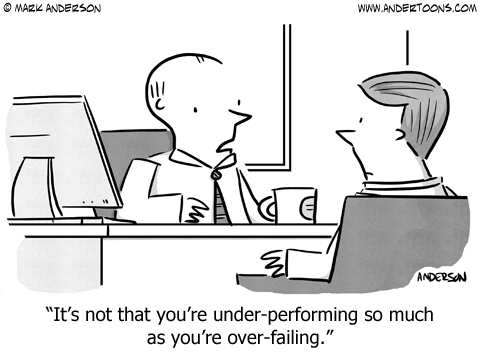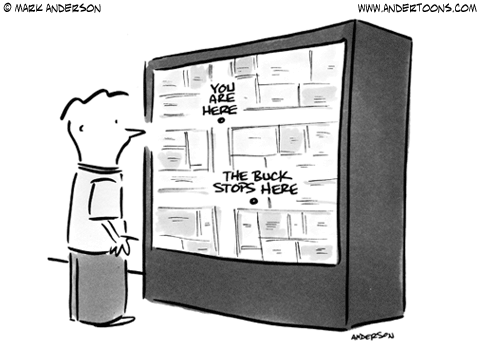The news is not good. It appears the Alberta approach to improving productivity is to throw more people, money and material resources at the issue without considering – or measuring for – the consequences. Financial Post’s July 25th story by Yadullah Hussein about oil and gas productivity ranking puts Alberta at dead last. Canada is crawling along at .07 productivity, while our southern neighbours increase their productivity by 2.7 percent annually, says Lisa Riciotti of Alberta Venture.
Why does this matter? Because when outputs are more than inputs, economic collapse is not too far down the road.

What has been missing from the productivity discussion is how human resource departments are contributing to the problem. It is something I hear regularly explained by operations managers and SME business owners when they call to ask about supervisory and lead hand training. My question, “Why do you think your supervisors need leadership training?” almost always results in this answer: “We started out 20 years ago as a Mom and Pop venture, and now we are exploding with new business. But…our internal structures don’t support our growth– we are losing some of our good people just when we need them most.”
A bit more probing 90% of the time goes to the same complaint; “We have these three negative people … we have given them pep talks and bought them company gifts, but we just don’t see any progress. They seem to be dragging everyone down…they are even rude to customers but, hey – we are proud of being a family company and we prefer ‘education’ and ‘motivation’ to discipline.”
Doesn’t this sound a bit touchy feely for a province known for its red neck business attitudes?
Surprisingly many SMEs in Alberta are telling the same story about keeping negative, mean spirited and unproductive employees. The main reason? “…Because we are like family here,” which begs the question about how functional Alberta families actually are if this is their model. Maybe decision makers are too afraid of confrontations to deal with negative people. Maybe the bad guys are relatives of the owners. Maybe Alberta business managers have the twisted idea that being treated “nicely” is what unhappy, unproductive, aggressive and free loading workers need to get back on the motivation train.
Let’s do a little reality check to see what actually happens to productivity when negative people stay in a company to poison the atmosphere.
According to Robert Sutto’s research in his book, “The no asshole rule: Building a civilized workplace and surviving one that isn’t,” the average cost of one workplace jerk is $160K, and when you add the 20% of workers who disengage, leave or spend all their time avoiding the negative person, costs rise to $750K per year in direct losses to the company. That is the cost of one bad apple.
On the flip side though, the day the bad apple is gone, productivity in the immediate team goes up by 40%. If the bad apple is gone permanently, that productivity increase stays at 40% or gets better. Do this for the 3-5 people who have been poisoning the workplace, and the entire company surges forward with increased employee engagement and resulting improved productivity.
Now this is not to say that everyone who doesn’t come to work jumping for joy should have their job on the line. We are talking about the real downers: those people who you dread facing at work and who often have long term issues with meanness, aggression, poor work ethic and seriously negative attitudes. Removing them from your workforce, even if you don’t have anyone to replace them will increase your productivity. Remember that Sutton’s studies showed an average of 40% productive workplaces after the removal of just one seriously negative employee.
Friendly workplace relations do matter to your people and to your bottom line.
According to a Gallup survey cited in the Workforce May 2014 issue, employees with friendly relations at work have an 18% lower turnover rate, are 50% more loyal to their companies and recommend their companies to quality new recruits at 74%. Are you convinced? The bottom line is this: none of us can afford to keep nasty people in our organizations. Either they have to change or they have to go.
“True,” you might say, “but this is more easily said than done.”
Practically, what can you do to effectively manage, or terminate intensely negative, often intimidating employees?

The first step is to recognize that they are a problem, document the behaviour and make a plan to deal with it, as a team. Get your HR and upper manager together– whoever you think should be in on the plan – and make sure you are all on the same page. Unionized companies can get buy in from union stewards if they include them in the planning phase and sincerely seek their input (providing they are not in the same category as the employees you need to discipline).
Once you have a plan (and you may well be bound by the company’s “due process”), it needs action. The process usually involves giving the individual a warning and a time to show behavioural change. Next is often a written action plan with timeline and then, if there is no improvement, dismissal. This is, of course, not news and many of my clients say they already have this due process in place.
Where good plans fail: Operations and timelines
Where I have seen the best of plans fall down is in the operations. Once you have a plan you need to know who is doing what part of it and when. There should be a coordinating person who checks with others to make sure tasks are done, at the agreed upon time. These tasks may need to be worked on in pairs if the negative employee has a history of intimidation or manipulation.
Document all interactions and make sure you have your back covered. Tell your superior when you are going to have the meeting, run the meeting with a colleague to serve as witness and then tell that same superior how it went. Follow up with a confidential email summary of what happened and what action items are pending. Get a witness to sign it.
The other fatal flaw happens in the amount of time given to the employee to show improvement. It is not uncommon for decision makers to wait three months after a first warning timeline. One week is usually all that is required to see if there is motivation to change. If the impending threat of job loss does not motivate you to change in a week, three months will only prolong the agony.
To deal with negative employees, you must stick to the agreed upon timeline and follow up religiously as planned. The slightest deviation gives manipulative or aggressive people the upper hand, and you may have lost your opportunity.
In the best case scenario the employee realizes his or her mistake and makes corrections. If that does happen, the employee will need support to sustain the improved behaviour or may need to be terminated. Explain to yourself and to the employee that this is a business decision, not a personal one. After all, negativity seriously affects your business reputation, employee retention and your bottom line.
Your employees are NOT your family. They are your employees. You can have a friendly workplace with hard working employees who may say it “feels” like family, but make no mistake – your workplace is not your home. It may have started out that way 30 years ago with Mom and Pop, but now your business is all grown up, and it’s time to leave the family metaphor where it belongs – in a real family.







